History
The first settlers of Bequia were the Arawaks who gave Bequia its name, which means ‘Island of the clouds’. These were followed by the warlike ‘yellow’ Caribs. In 1664, France laid claim to Bequia, but did not establish a permanent settlement there. In 1675, the slave ship Palmyra sank off the Bequia coast. The Africans who managed to swim ashore eventually mixed with the native Caribs to form the ‘Black Caribs’ a fearsome fighting force so strong that they were left alone by the Europeans who chose to conquer other islands.
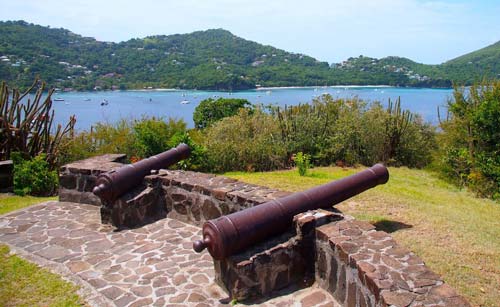
Canons at Hamilton Fort
By the early 1700’s Bequia, together with the other Grenadine Islands, belonged to Grenada which was ruled by the French at that time. Between 1719 and 1763, French settlers set up lime, indigo and sugar factories in Bequia. However, The Treaty of Paris, between the French and English in 1763, gave St Vincent and the Grenadines together with other Windward islands to the British. Guadaloupe, Martinique and St Lucia became French territory again. In the years after the Treaty, Bequia’s land was split between the French settlers who were allowed to make claim on the land that they had painstakingly cultivated, English, Irish and Scottish settlers that had been moved off other islands in the West Indies and received some smaller pieces of land and the British elite who were ‘given’ the prime areas . In the late 1700’s a fort was built in Hamilton to protect the English stronghold . This site can be visited today. There are only a few canons left to mark the ‘fort’ but what a view of the harbour!
By the 1820’s the population on Bequia had grown to around 1400, of which at least 1200 were slaves working on the sugar plantations. However after Emancipation, in August 1838, the sugar industry declined and many of the once wealthy owners returned to England.
During this period Bequia relied on island traders to import its supplies and export its produce mainly sugar, molasses, rum, coffee, indigo and cotton. It’s settlers were farmers, shipwrights, carpenters, fishermen and seamen. The shiprwrights used Bequia’s white cedar for boat building and the industry developed, especially later on in the 19th century.
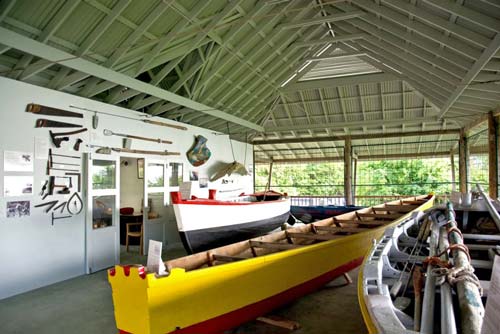
Bequia Museum at Friendship
This was also the time that the Yankee whalers came down to the Grenadines, following the whales which they caught on a commercial basis for meat and oil for lighting. A seaman from Bequia (‘old Bill’ Wallace) who had worked on and built whaleboats in New England, returned to Bequia to start a whaling station in Friendship in the 1870’s. A second station was opened by ‘Pa’ Olivierre. Infact, whale oil became one of the main exports and whale meat a staple food for many Bequians and the Bequia whaling fleet became a force to be reckoned with. Athneal Olivierre was the modern day hero and a revered harpoonist until his death in 2000 at the grand old age of 79.
Bequia’s shipwrights produced many whaling boats and progressed to schooners which were built on most of the main beaches. Bequia became the premier boat and ship builders in the Grenadines. There were 71 boats built in Bequia over nearly the same number of years between 1923 and 1990, almost half of the ships registered in the country at that time.
The largest wooden ship ever to be built in the whole of the West Indies was the ‘Gloria Colita’ built in 1939. This 165 feet vessel weighed in at 182 tonnes and was built on the beach at Belmont.
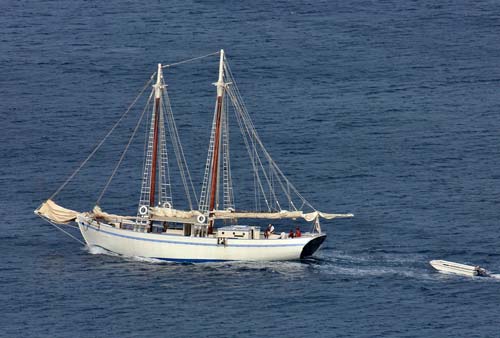
Friendship Rose
The schooner Friendship Rose, built in 1969, started as a ferry boat transporting everything from mail to produce and other cargo between St Vincent and the Grenadine Islands now runs charters to Tobago Cays and Mustique.
Another famous ship built in the late 1980’s is the 70’ schooner ‘Water Pearl’ which was built on the beach close to where Dive Bequia is now situated, by a team of Bequia Shipwrights for the musician Bob Dylan .
Although Bequia’s golden age of shipbuilding has now passed, descendants of Bequia’s shipwrights, are still building boats on the island today, employing skills and methods that have remained unchanged for generations.
Since the early 1980’s Bequia has become better known for it’s four day Easter Regatta where the Bequia’s finest seamen compete against those from the other Caribbean islands on their double enders, which range from 21 – 28’. Not only do they get to show off their competitive sailing skills but their customary boat building skills too as some of the boats have been built and re-built in Bequia since the turn of the century.
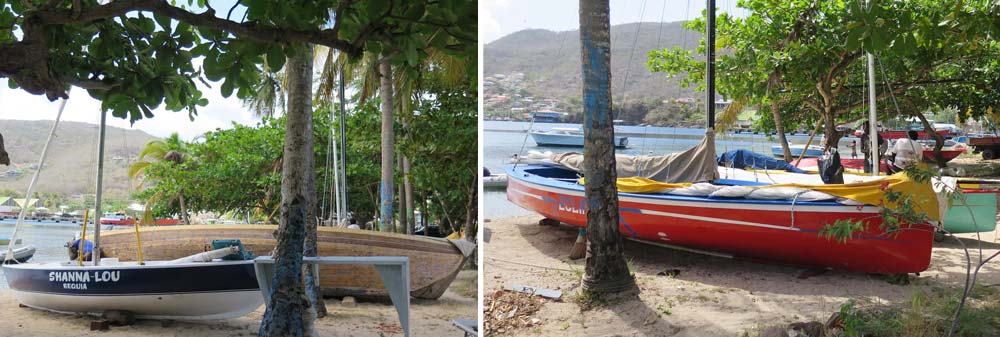
Here are some photographs of Bequia, taken in 1957 by the parents of some guests of ours who were sailing around the Grenadines and Greneda at that time. No one seems to know who ‘Tony Gibbons’ was that Tony Gibbons Bay was named after, but this was changed to Princess Margaret Beach after she swam off it.
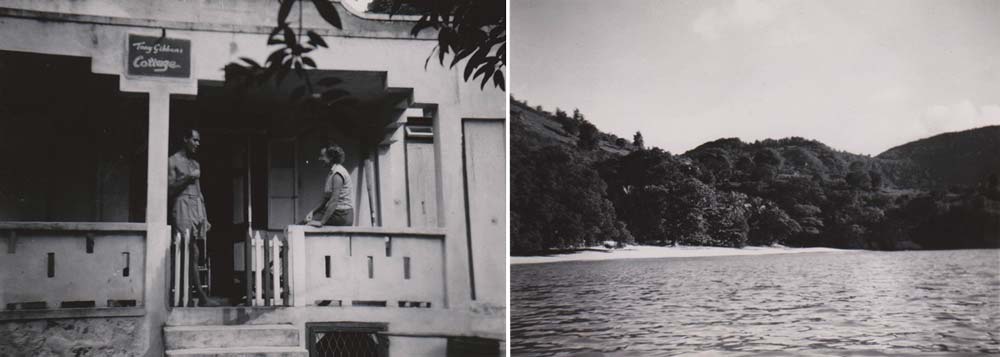
Tony Gibbons Beach & House in 1957
The Sunny Caribee was the first major hotel built on Bequia in the 1950’s and is now called The Plantation House. It has recently been renovated and is extremely popular.
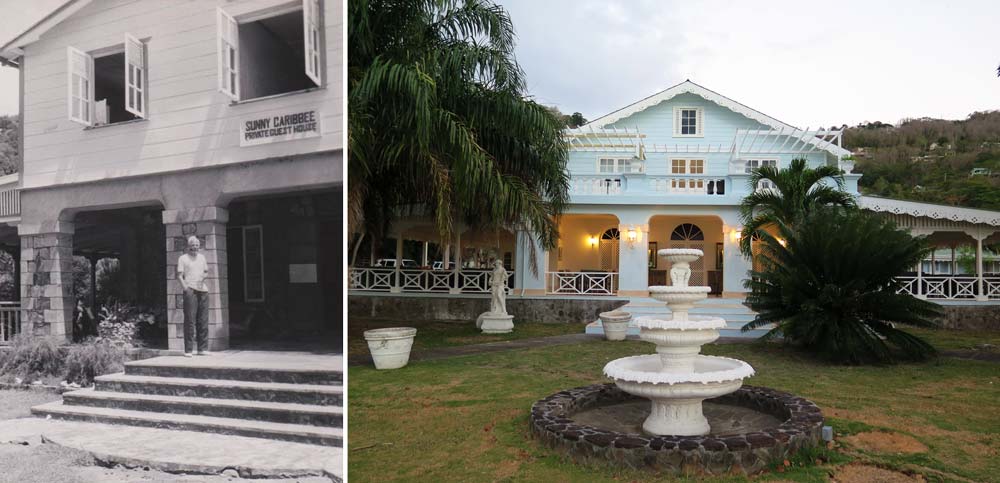
The Plantation house in 1957 and today
Bequia now
Decendents of the shipwrights are still building boats. There is still a fleet of fishing boats sailing out of Paget Farm and Friendship Bay. Tourism, however, has to be the biggest ‘employer’ these days.
We have the beautiful and safe Admiralty Bay which for centuries has been a safe haven for all sailors and still draws in small cruise ships and sailing yachts from around the world. We are far South of the ‘Hurricane Belt’ and have safe anchorages off Princess Margaret Beach, Hamilton Beach and moorings can be taken off Belmont and Port Elizabeth beaches.
You can get food items which are produced on the island, such as honey, peanuts, ice cream, jams and chutneys, salads and fruits. Clothing and souvenirs such as the books written by Selma Duncan, Bequias own ‘poet laureate’. You can get model boats of all sizes and colours which are made and sold in Sargeants and Mauvins shops. We have a potter and several artists who have special exhibitions on a regular basis. Mechanics who can fix almost anything, as living on a small island you can’t just replace items from the US or Europe quickly.

The decendents of the Wallaces, Ollivierres, MacIntoshes, Hazels, Leslies, Bynoes, Lewises, Kydds and Goodwins keep the island flourishing with their laid back, friendly and hospitable ways. Nothing is too much trouble and when they chat with you it is because they want to and not because they are after your money!
In more modern times, there has been an influx of overseas visitors, especially after the opening of the small airport in 1992, who visit time and time again or have built homes to stay in during the winter months of their homeland, settle here for good or just can’t find anywhere else in the World they would rather spend their short vacations at.
Many visitors who first discovered Bequia when cruising or sailing in the area also return to spend more time here. There are many hotels, apartments and rooms to cater for visitors on all budjets. From backpackers on their ‘gap year’ to family reunions and wedding parties in villas such as ours.
All visitors need restaurants, cafes, bars and local rum shops and Bequia has them all.
The Bequia Easter Regatta which has been running since 1980 is now firmly on the racing calendar. Bequia Music Fest, around the third week in January draws crowds from around the world. Bequia Carnival, late June is the forerunner to Vincy Mas. July brings Fisherman’s Day, with a great bill fish tournament attracting boats from Barbados and other nearby islands. Christmas starts with the Nine Mornings festival of carols and celebration leading up to Christmas Day. The sky is lit up with a huge firework display on Old Years Night which fills Admiralty Bay.
Most beaches are still natural with soft, white sand and Princess Margaret Beach is quite shallow and ideal for youngsters and not so proficient swimmers. Snorkelling can be good at both ends of the beach. It is very easy to charter a small boat these days to visit the nearby deserted islands of Isle de Quatre and Petit Nevis.
We see guests arriving stressed out from work and their busy lifestyles and just love to watch this melt away after a day or so.
Bequia is a very special island that we hope will keep it’s charm well into the future.
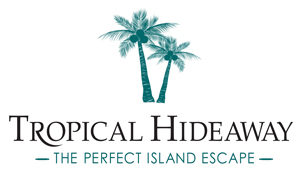
Comments are closed.